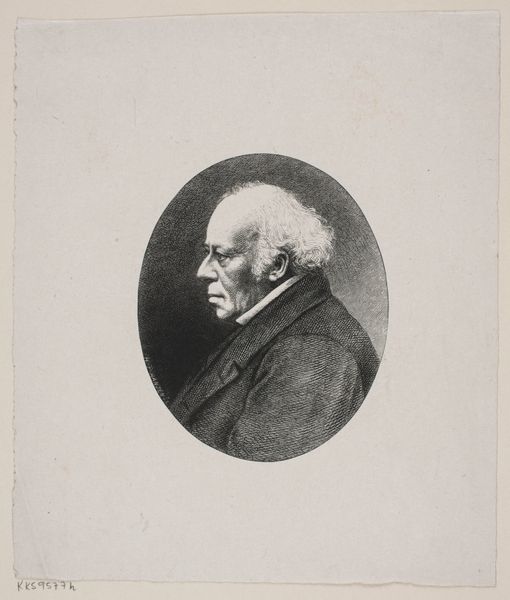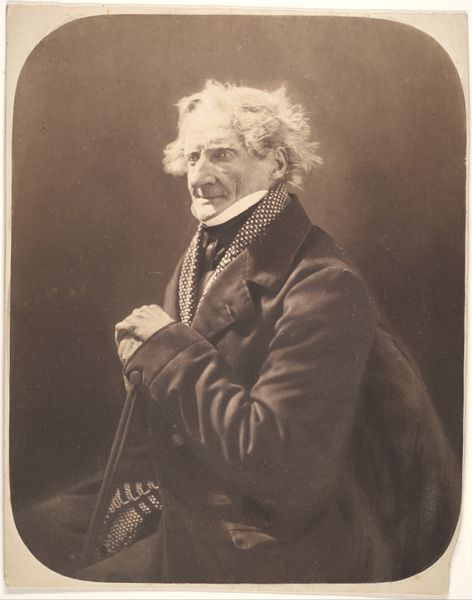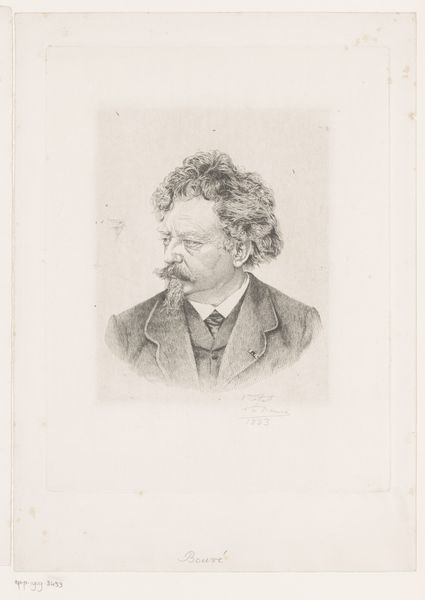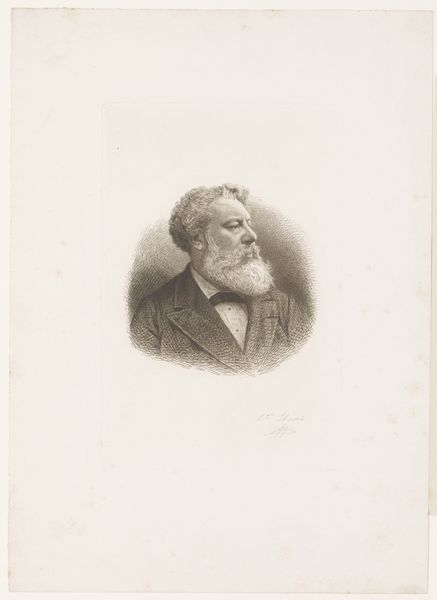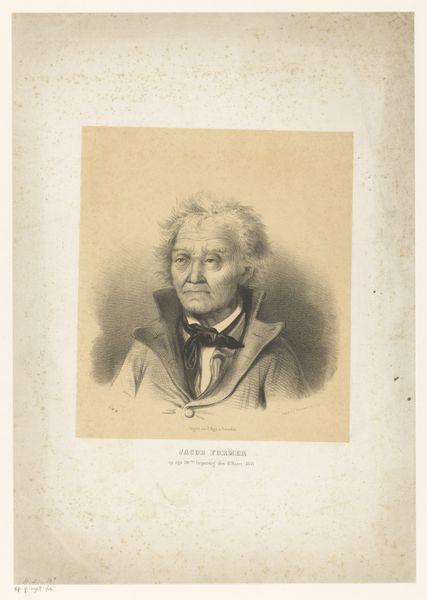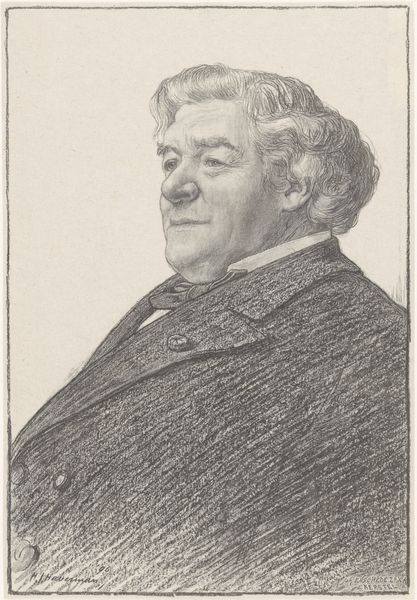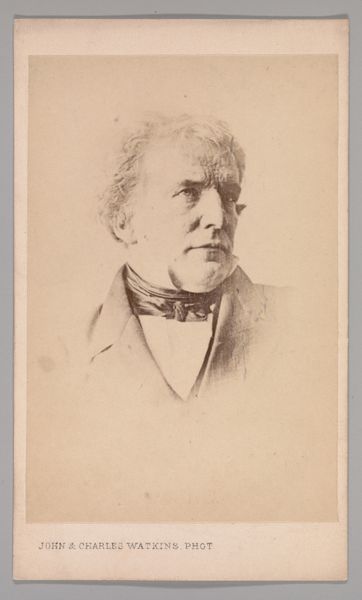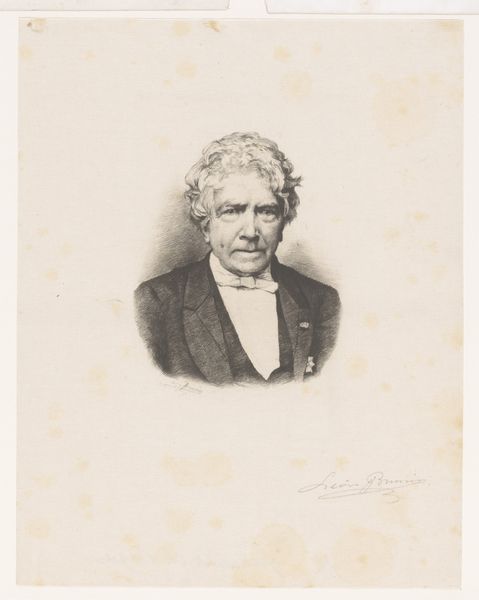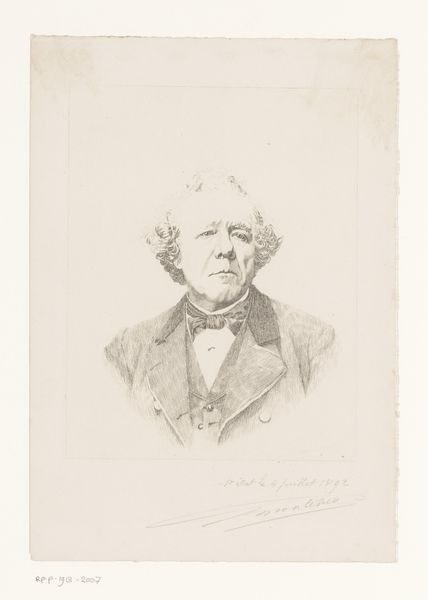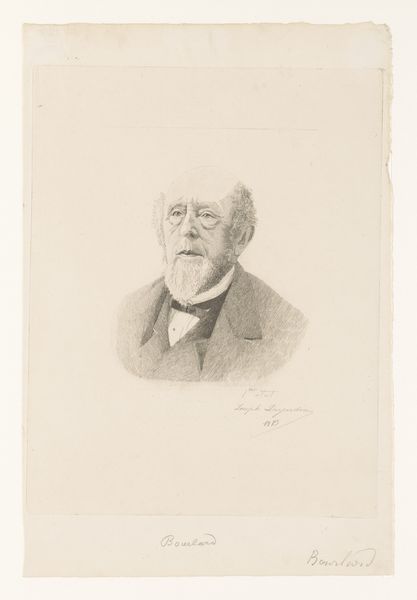
drawing, print, etching, paper
#
portrait
#
drawing
# print
#
etching
#
paper
#
portrait reference
#
portrait drawing
#
realism
Dimensions: 231 × 175 mm (image); 333 × 239 mm (sheet)
Copyright: Public Domain
Editor: So this is "Portrait of Corot," an undated etching printed on paper by Etienne Gabriel Bocourt, residing here at the Art Institute of Chicago. It strikes me as such a direct and almost confrontational image. What's your take on this portrait? Curator: Well, the directness you observe resonates strongly. Consider the 19th-century context – a time of burgeoning social mobility and evolving concepts of celebrity. Bocourt's choice of Corot, already an established, successful painter, and the medium of etching which allows for wide reproduction, speaks volumes. Isn't this, in some ways, an early form of image democratization? Editor: I hadn’t thought about the reproduction aspect so much. It’s interesting to frame it in terms of image access. Curator: Precisely! Who gets their image circulated, and why? Think about Corot's persona. He wasn't from the aristocracy; he came from a bourgeois background. His rise mirrored shifts in power, the increasing influence of the middle class. Do you see any visual clues about social status being intentionally highlighted, or conversely, played down? Editor: Hmm… maybe his gaze. He looks self-assured but approachable. His clothing seems more functional than overtly opulent. Perhaps this was a calculated representation, a subtle signaling of a "man of the people" artistic persona. Curator: Exactly. The pipe, too, can be read in multiple ways – a symbol of leisure but also of the everyman. What power dynamics might exist between the artist, Bocourt, and his sitter, Corot, and how do we interpret it? Editor: This really sheds new light on portraiture. I always thought of portraits as representations of the elite, but seeing it as a medium for wider social representation shifts everything. Curator: It forces us to ask, who are we choosing to immortalize through art, and what stories are those images telling? This reframes historical interpretation.
Comments
No comments
Be the first to comment and join the conversation on the ultimate creative platform.
